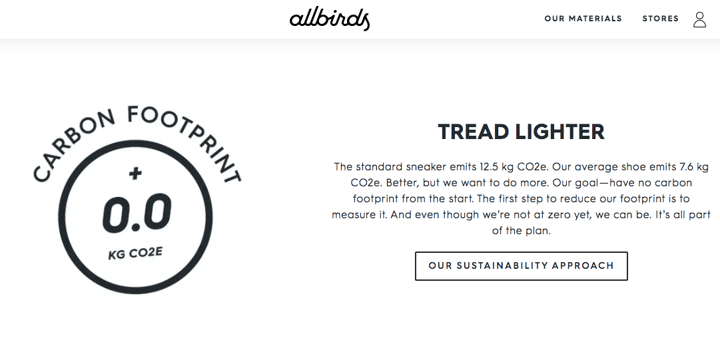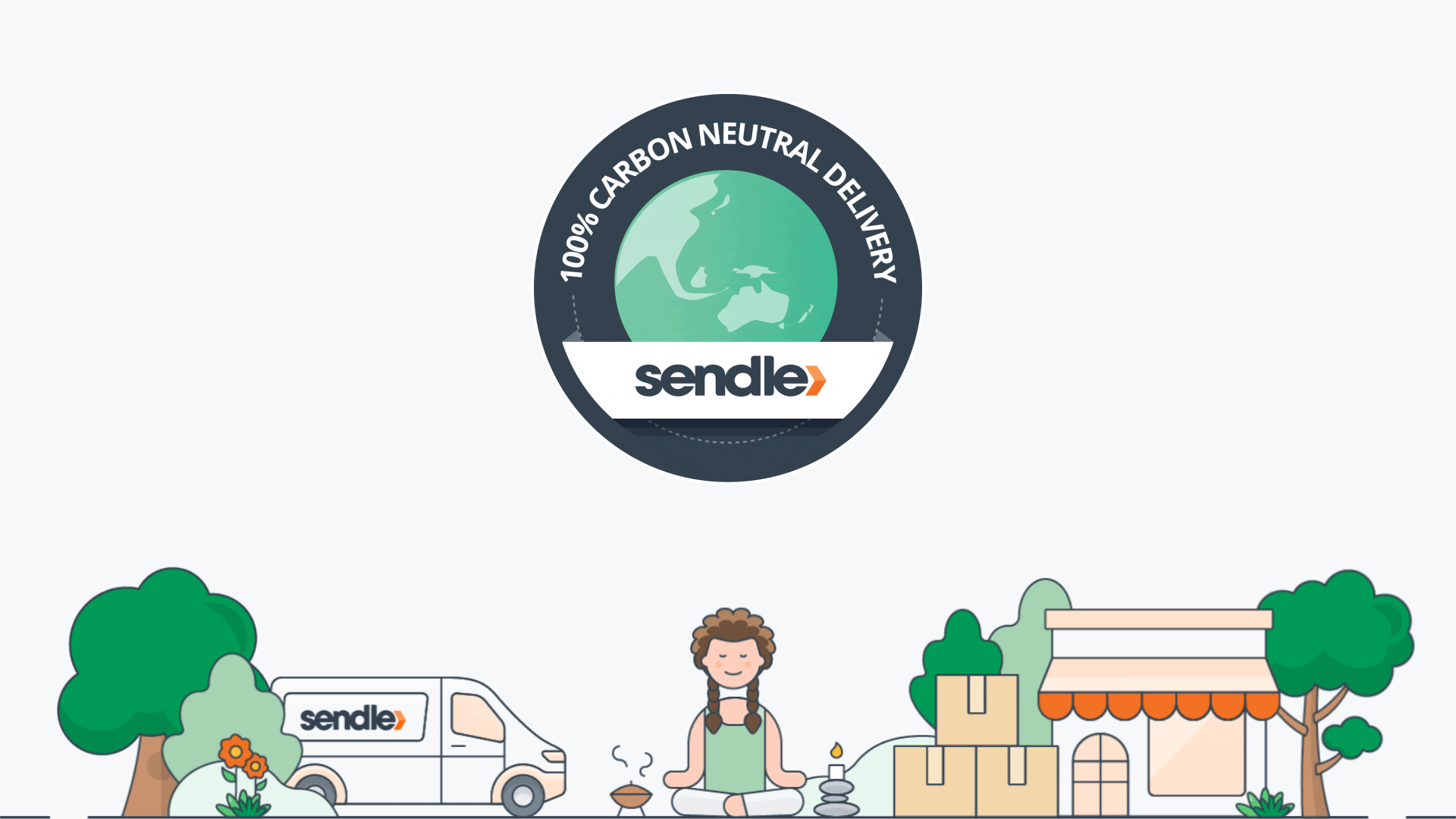
How to go carbon neutral as a small business
Our partners at Sendle share how and why small businesses should make efforts to eliminate the carbon emissions they contribute to the atmosphere.
By Guest Author — 18 August, 2020
Shrinking the size of our collective carbon footprint isn’t a singular effort, but rather a multitude of personal and organizational efforts. The hope is that together we can work to erase that footprint altogether.
While some big businesses are taking the lead on environmental changes, small businesses can (and should) make bold changes to reduce and ultimately eliminate the emissions they contribute to the atmosphere.
The reasons why go beyond simply being altruistic. You can make the world a better place while also benefiting your business at the same time. Let’s first explain what it all means.
What does ‘carbon neutral’ mean?
The things we do—drive, fly, operate a website, heat or cool our offices, shed light upon our workspaces—expel carbon dioxide (as well as other greenhouse gases) into the atmosphere.
Our activities are carbon additive, if you will.
Carbon neutral means that by dent of other activities (which we’ll cover below), your net carbon output is zero—neutral, that is. Being carbon neutral is like cleaning up after your own carbon footprint.
So, for every ounce of CO2 you incidentally dump into the atmosphere, you find a way to remove an ounce. Even Steven!
Why should your business go carbon neutral?
While individual acts of carbon neutrality are a step in the right direction, the effect of lots of small businesses going carbon neutral is many times more powerful. With our powers combined...
There are plenty of selfless reasons to make your business more sustainable. You love the planet and you want it to keep on thriving (and producing oxygen and for all the great hiking).
But, there are also great business reasons to go carbon neutral. Consumers want it.
Nearly eight in ten consumers think it’s important that a product be sustainable and environmentally responsible. Of those consumers, 72% would pay a premium for sustainable products.
Small businesses can make changes more quickly and easily than larger businesses can, enabling them to take advantage of these shifts in consumer behavior more immediately.
By taking the time to understand and respond to your customer base, you can create stronger and more loyal relationships with them. It shows that you care about what they care about and you are responsive to feedback.
Your community extends beyond your customers, too. By taking sustainable strides, you become part of a community of business owners that boost each other and collaborate in creative ways. As the very true cliche goes, a rising tide lifts all boats.
Beyond that, reducing your carbon footprint can actually save you money. The less energy you use, the smaller your bills!
A short list of companies going carbon neutral
It can be daunting to take that first step into becoming carbon neutral, like that pioneering footfall onto a seemingly undiscovered planet.
But, it is far from undiscovered. There are many companies (both large and small) that have forged a path forward for other businesses to follow.
Some are on their way to carbon neutrality, some have gone beyond that. Let’s look at a few of these fine companies.
- Sun & Swell Foods. This snacky B Corp has put its energy behind changing the packaging they use to be either 100% compostable or recyclable. Further, they source ingredients from sustainable companies. Through 1% for the Planet, they give 1% of sales to environmental causes each year.
- Allbirds. This now well-known shoe company has worked hard to reduce their emissions by using recycled and natural materials and then offsetting the rest of their emissions. They are a completely carbon neutral business now.
- Shopify. Citing anthropogenic climate change as ‘the greatest challenge of our time’, Shopify has made strides by making their digital platforms and their operations entirely carbon neutral and committing $1M a year to carbon sequestration.
- Etsy. Early in 2019, this uber-popular eCommerce platform for micro-businesses became the first major online retailer to offset all of its shipments, taking care of the majority of the company’s carbon footprint.
- Avocado. Last year, this eco-conscious mattress company (and B Corp) went carbon neutral. This year they outdid themselves by going carbon negative, offsetting more than their share of carbon emissions.
These businesses represent so many industries and illustrate all the ways that you can begin your journey to sustainability.

Small business tips for moving toward carbon neutral
The first step to going carbon neutral is to first reduce your carbon footprint. Once you’ve shrunk it down a few sizes, the remaining carbon can be offset with investment in carbon projects.
Reduce, reuse, recycle. Watching what you waste goes beyond just having the right bins in your office. Move toward post-consumer waste products and then use less of them, reuse where you can, and recycle where you can’t. The game is to keep the trashcan empty, as much as possible. This can touch every part of your business—from order management and shipping to
Compost. Every compostable piece of waste you divert from the landfill is actually food for the earth. Instead of sitting in the dump to slowly decay away into noxious greenhouse gases, it will help create rich black soil for community gardens and city parks.
Switch to energy efficiency. By changing out incandescent bulbs for LEDs, utilizing more natural lighting, and automating light usage (with motion sensors), you will both lighten your electric bill and shave off some of your business’ emissions. On top of that, energy-efficient heating, cooling, and appliances can further reduce your impact (and again, bills).
Packaging/product sourcing. Where your products come from and what they are made of matters. Same with your packaging. If you source from the other side of the planet, your product has already started accumulating a carbon footprint. If the materials are unsustainable and non-compostable, they are responsible not only for their eventual emissions, but also the degradation of our most precious carbon capture machines—trees.
Fly and drive less. Air travel emits a lot of carbon. One flight from Seattle to NYC emits half a metric ton of CO2! Taking a drive isn’t so dramatic, but the average driver emits 4.6 metric tons of CO2 a year. You can’t always avoid driving and flying, but cutting back can make a difference.
Ship carbon neutrally! Speaking of driving and flying, shipping comes with its own hefty footprint. Wouldn’t it be nice to snap your fingers and make your shipping program magically carbon neutral? Luckily, Sendle has been 100% carbon neutral from day one. So, snap your fingers and start Sendling.
Finally, it’s time to offset your carbon emissions. After doing all the hard work of trimming your carbon footprint to a daintier size, offsetting the rest is fairly simple. You can choose from a host of great organizations that can help you calculate your emissions and sell you credits in various environmental projects.

Offsetting that carbon
There are plenty of amazing carbon marketplaces out there, all with their own selection of environmental projects to support.
The focus of these projects vary—clean water, regenerative agriculture, renewable energy, reforestation, clean cookstoves, poverty mitigation, and more.
Here are a few great organizations to choose from:
Each organization provides a handy calculator to figure out your carbon footprint. To be as accurate as possible, you’ll want to keep records of your energy use, travel, and shipping estimates (if you don’t use Sendle).
Also, check for third-party certification to ensure that your credits will be used responsibly.
To learn more about how carbon offsets work and how to make the best decisions for where your money goes, check out this deep dive by Vox.

Sean is the Content Manager for Sendle, the first and only 100% carbon neutral shipping service in the US and Australia. He keeps busy by writing tons of content to help small businesses and finding innovative ways to make and eat new foods.